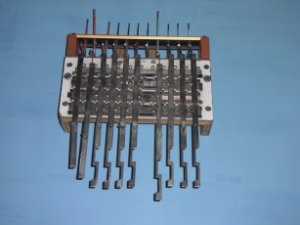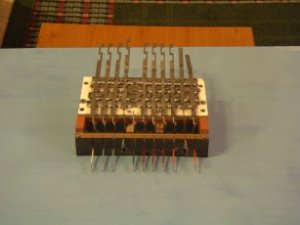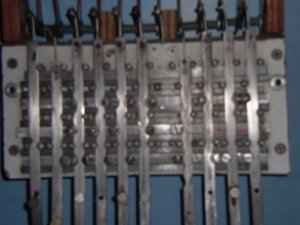A friend of mine, the late Henry Umpelby, was a mechanical enthusiast and built working interlocking to run his layout. He built the first one, for his station and engine shed, from Lego parts (I never really knew how it worked).
The next one was made from mild steel (for the working bits) and a bit of plastic cove moulding for the top panel. I think the vertical rods operated electrical switches.
The levers actually worked, and you had to pull them off in the proper order to operate the trains. You would set the route, pull off the signals and then run the train. If it didn't run, you had forgotten to pull something.
I think the plant operated two double junctions.
I was given this part of the equipment when Henry died. The layout had already been dismantled. Part of the plant seems to be missing, but doesn't affect operation.
The next one was made from mild steel (for the working bits) and a bit of plastic cove moulding for the top panel. I think the vertical rods operated electrical switches.
The levers actually worked, and you had to pull them off in the proper order to operate the trains. You would set the route, pull off the signals and then run the train. If it didn't run, you had forgotten to pull something.
I think the plant operated two double junctions.
I was given this part of the equipment when Henry died. The layout had already been dismantled. Part of the plant seems to be missing, but doesn't affect operation.




